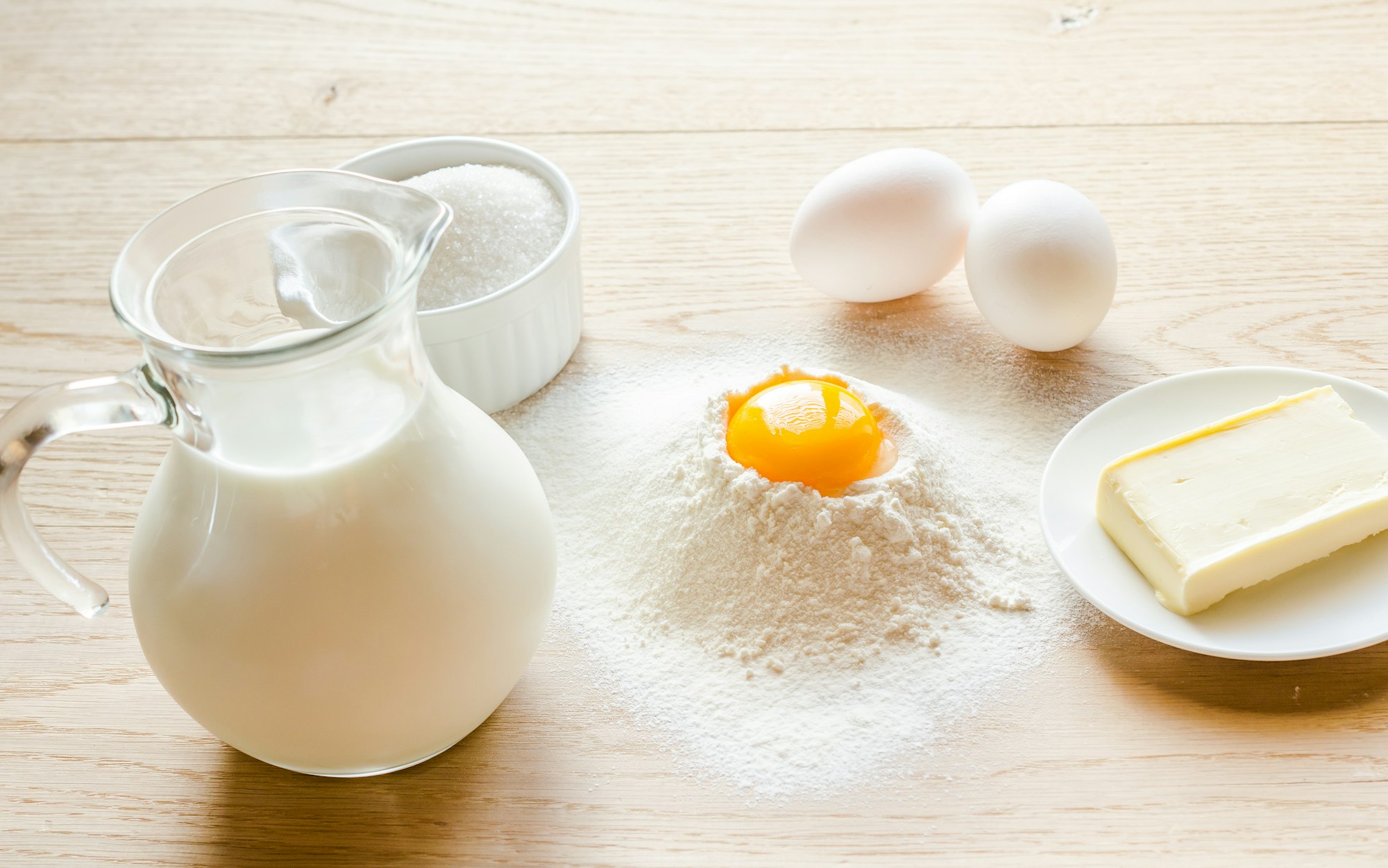
Hey there, foodies and cannabis enthusiasts! Have you ever considered adding a touch of cannabis to your gourmet dishes? Cooking with cannabis has evolved far beyond just making brownies for a relaxing evening. It’s now a culinary trend that combines the artistry of cooking with the science of cannabinoids, resulting in dishes that tantalize the taste buds and offer a soothing experience. Let’s explore this exciting blend of flavor and wellness together!
Table of Contents
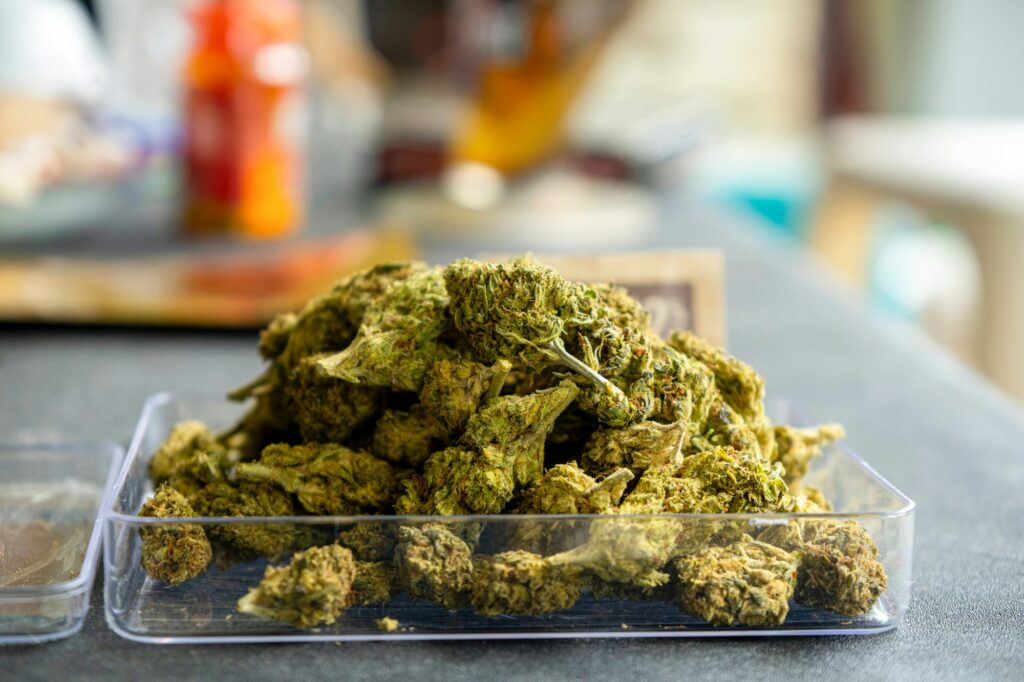
The ABCs of Cannabis Components
Alright, culinary adventurers and cannabis connoisseurs, let’s delve into the dynamic duo that brings our green-infused dishes to life: THC and CBD. Think of these cannabinoids as the headliners of a spectacular culinary show, where each brings its unique flair to the stage.
THC (Tetrahydrocannabinol) is the star that brings the buzz, known for its psychoactive effects that can elevate your mood and stimulate your senses. It’s like the rockstar that adds an edge to the experience, making dishes not just flavorful but also a bit more adventurous.
CBD (Cannabidiol), on the other hand, is the calming counterpart. It’s non-psychoactive, offering therapeutic benefits like reducing anxiety and inflammation without the high. Think of CBD as the soothing melody that balances the wild beats of THC, creating a harmonious experience that’s both delicious and relaxing.
Understanding how to balance these two cannabinoids is crucial for crafting dishes that not only taste great but also provide the desired effects. Whether you’re looking to create a euphoric experience or a calming meal, the interplay of THC and CBD offers endless possibilities in cannabis cuisine.
So, let’s keep exploring how these compounds can enhance our culinary adventures, combining flavor with feel-good vibes in every bite!

THC: The Euphoria Engineer
First on our list is THC, or Tetrahydrocannabinol if you prefer the full name. This compound is the key player behind the classic cannabis “high.” But it’s more than just about laughs and cravings; THC is a multifaceted component that can elevate your culinary creations in unique ways.
- THC (Tetrahydrocannabinol): The star of the show for those seeking that euphoric “high.” It’s essential to find the right dose to balance between bliss and relaxation.
- Mood Modulation: THC is great at lifting spirits, turning a regular meal into an uplifting experience. Think of your favorite comfort food, now enhanced with a gentle euphoria.
- Sensory Amplification: Ever notice how food tastes better when you’re high? THC sharpens your senses, making every bite a burst of flavor. It’s like cranking up the volume on your taste buds.
- Pain Relief: For those dealing with pain, a THC-infused dish can be a tasty way to find relief. Whether you’re managing chronic pain or just recovering from a tough workout, THC can offer comfort and ease.
CBD: The Calming Counterpart
Next up, we have CBD, or Cannabidiol, the chill cousin of THC. Unlike THC, CBD is all about relaxation without the high, making it the perfect ingredient for those who want to unwind without any psychoactive effects.
- CBD (Cannabidiol): Known for its calming properties, CBD is all about zen vibes without the buzz. It’s great for easing anxiety and pain, making it a fantastic addition to a mellow meal.
- Anxiety Alleviation: In our hectic world, a little stress relief goes a long way. CBD is celebrated for its ability to reduce anxiety, offering a soothing, calm experience—like a deep breath in edible form.
- Anti-Inflammatory: CBD doesn’t just calm the mind; it also helps reduce inflammation in the body. This makes it an excellent choice for meals aimed at easing inflammation-related discomfort.
- Subtle Integration: Unlike THC, which can distinctly alter a meal’s experience, CBD integrates smoothly, providing a subtle enhancement that enriches the dining experience without overpowering the flavors. It’s the perfect way to add a touch of wellness to any dish without changing its essence.
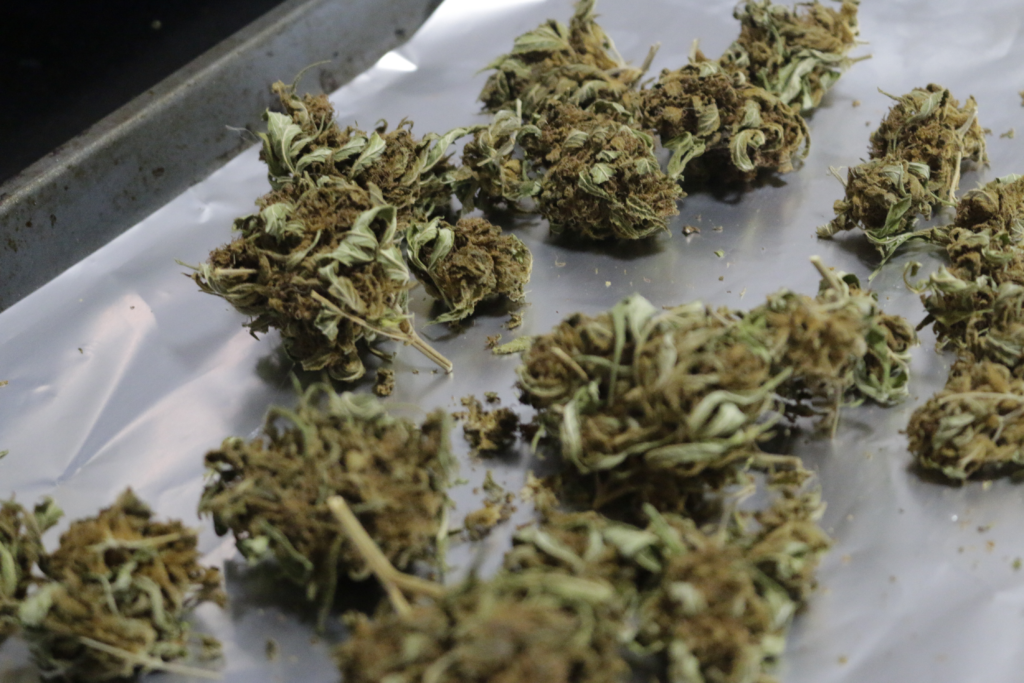
Decarboxylation: The Magic Begins
Ah, decarboxylation—it’s the crucial step in cooking with cannabis that turns inactive compounds into the magic that brings your dishes to life. Think of it as the secret handshake that lets you into the culinary cannabis club. Without it, you’re just adding raw, inactive herbs to your recipes, hoping for a mystical effect that simply won’t come.
Picture yourself as a culinary wizard, preparing to conjure up an enchanting dish. But just like in any good spell, there’s a vital step that unlocks the magic: heat. Raw cannabis contains THCA and CBDA, which are non-psychoactive in their natural state. To unleash the desired THC and CBD, which are responsible for the psychoactive and therapeutic effects, you need to decarboxylate the cannabis.
Decarboxylation involves heating the cannabis at around 245°F (120°C) for 30-40 minutes. This process converts THCA into THC and CBDA into CBD, effectively “activating” the cannabis. It’s akin to transforming base elements into precious metals, turning a mundane ingredient into something truly special and potent.
Skipping this step is like setting out on a grand voyage without wind in your sails—you won’t get the full experience. So, always remember, that a little heat before you start cooking ensures your cannabis-infused dishes are both potent and delicious. It’s the difference between a meal that’s merely edible and one that’s truly extraordinary.
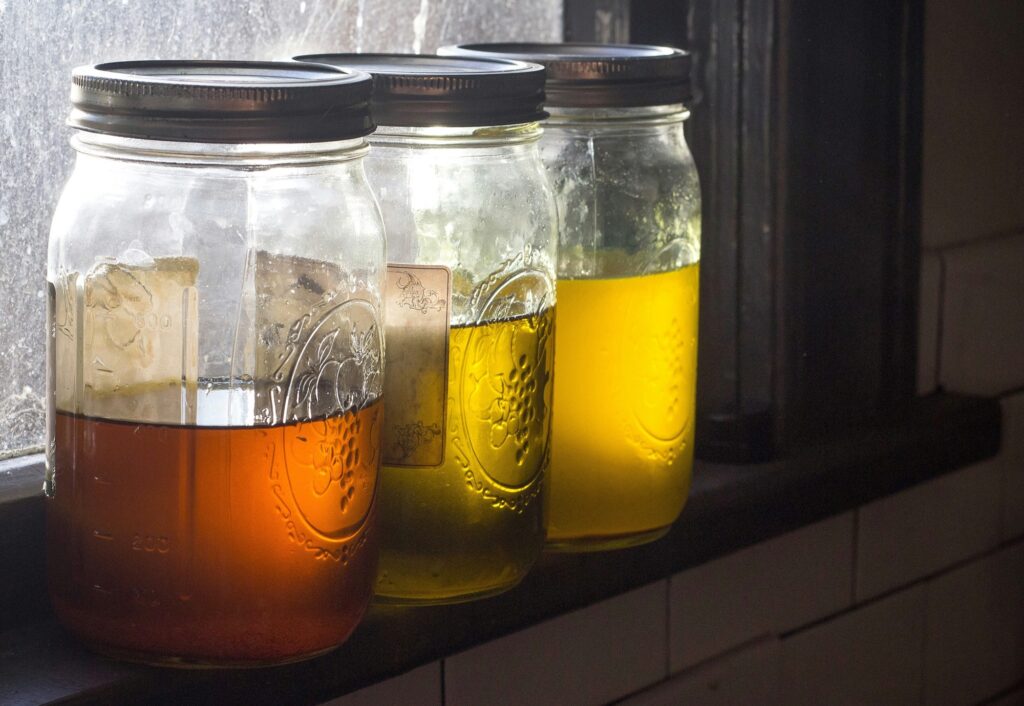
Finding the Perfect Fat
In the captivating world of cannabis cuisine, choosing the right fat is crucial, akin to selecting the perfect dance partner. Cannabis is fat-soluble, meaning it needs to bond with fat to release its cannabinoids effectively, such as THC and CBD. Without a suitable fat, these compounds won’t fully activate and deliver their effects.
Cannabutter and canna oil are popular choices in cannabis-infused cooking due to their versatility and ease of infusion. These fats not only distribute cannabinoids evenly throughout your dishes but also enhance the flavor and consistency. Whether melting cannabutter into your oatmeal or adding canna oil to a salad, these fats ensure that every bite delivers the desired effect.
For those who prefer dairy-free options, coconut oil serves as an excellent alternative. Rich in saturated fats, coconut oil is a great medium for infusing cannabinoids. It also imparts a subtle tropical flavor, adding a unique twist to both sweet and savory recipes. Whether you’re making vegan brownies or a creamy curry, coconut oil offers a perfect solution for infusing cannabis without dairy.
These fats play a vital role in cannabis cooking, helping to unlock the full potential of your infused creations. Understanding their importance allows you to make the most out of your culinary adventures with cannabis.
Ideal Fats for Cannabis Infusion
- Butter: The go-to for making cannabutter, offering a rich flavor and versatility in a variety of dishes, both savory and sweet.
- Coconut Oil: A popular choice among vegans, known for its high saturated fat content and subtle tropical taste, making it excellent for infusions.
- Olive Oil: Great for savory applications like dressings and dips, providing a heart-healthy option with a distinctive flavor.
- Avocado Oil: With its mild taste and high smoke point, avocado oil is perfect for cooking at higher temperatures without degrading the cannabinoids.
- Ghee (Clarified Butter): This lactose-free alternative to butter retains a rich, buttery flavor, suitable for those avoiding dairy while still wanting a luxurious taste.
- MCT Oil: A type of coconut oil that remains liquid at room temperature, commonly used in keto diets and ideal for cannabis tinctures.
- Bacon Fat: Adds a savory, smoky flavor to dishes, perfect for hearty, comfort food recipes.
- Lard: A traditional fat with a neutral taste, making it an excellent base for cannabis infusions where you don’t want to alter the dish’s flavor profile too much.
These fats not only help in the infusion process but also enhance the taste and texture of the dishes, making them essential components in cannabis cooking.

Dosage Dos and Don’ts
Here’s where things get a bit technical. The golden rule in cannabis cuisine is “start low and go slow.” Potency plays a crucial role in ensuring a pleasant experience, and getting the dosage right is key to avoiding overindulgence.
Navigating cannabis cooking can feel like experimenting in a lab, where the outcome is both delicious and varied. When infusing your dishes with THC, a few tips can help keep your culinary journey enjoyable:
Measure Twice, Eat Once: Precision matters. Use a digital scale to measure your cannabis before decarboxylation to maintain consistent potency in your dishes.
Know Your Strain: Different strains have varying THC levels. Understanding the THC content of the strain you’re using is essential for accurate dosing.
Dilute If in Doubt: If you’re concerned about potency, dilute your cannabis-infused oil or butter with non-infused versions. This reduces the THC per serving, making it easier to control your intake.
Mind the Math: A good starting point for newcomers is 5-10mg of THC per serving. This dosage is generally enough to feel the effects without overwhelming you. Remember, edibles take longer to kick in, so patience is key.
In summary, the art of dosing in cannabis cuisine is all about balance. Starting with a low dose and gradually increasing allows you to enjoy the experience without overdoing it.g, one carefully measured bite at a time. Remember, you can always eat more, but you can’t un-eat what you’ve already devoured.
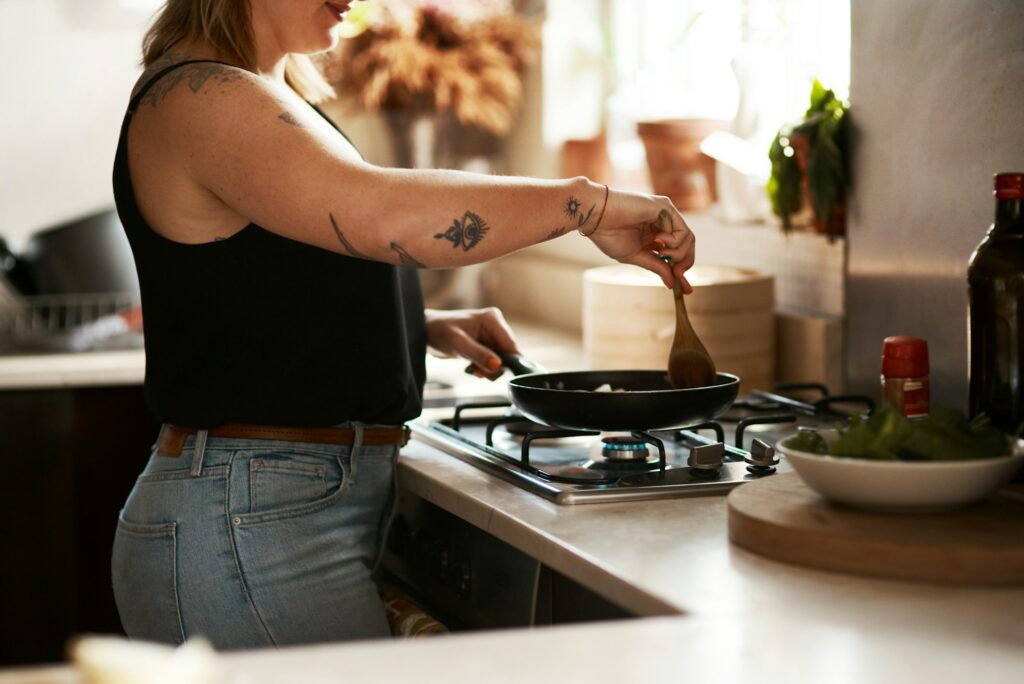
Stirring the Pot: Even Distribution
When it comes to cannabis-infused dishes, achieving an even distribution of the active ingredients is crucial. You want every bite to deliver a consistent experience, ensuring that the effects are evenly spread throughout the dish. The last thing anyone wants is an uneven dosage, where one part of the meal is much stronger than another.
Think of yourself as a culinary maestro, orchestrating a symphony of flavors and effects. Whether you’re making brownies, sauces, or dressings, the key is thorough mixing. This is especially important when you’re incorporating cannabis-infused fats like butter, oil, or coconut oil.
To achieve this, ensure your cannabis-infused fat is well-blended into your dish. Sometimes, this means using a whisk, a blender, or even an electric mixer to ensure the THC or CBD is evenly distributed. The goal is to create a smooth, consistent mixture where the cannabinoids are spread evenly throughout.
The aim is to deliver a balanced, pleasant experience from start to finish. By taking the time to mix thoroughly, you’re setting yourself up for a meal that offers a smooth, enjoyable journey without any unexpected highs or lows. It’s all about creating a great dining experience, not sending anyone on a rollercoaster ride.
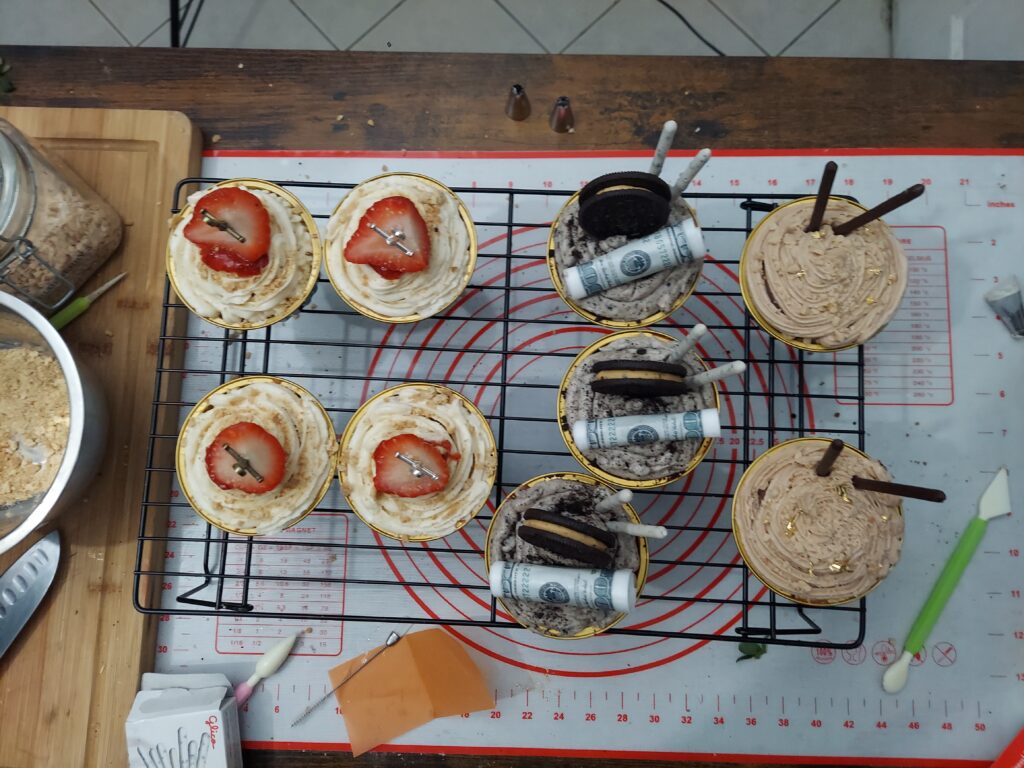
Taste Territory
Exploring cannabis-infused cooking introduces a unique challenge: navigating the plant’s distinct, earthy taste. For many, this flavor can be off-putting, but it also opens the door to creative culinary experiments. The key is to pair cannabis with complementary flavors that can either mask or accentuate its natural profile.
Chocolate, for instance, is a classic choice. Its rich, velvety texture and deep flavors can envelop the earthy notes of cannabis, creating a harmonious blend that’s both indulgent and satisfying. The bitterness of dark chocolate, in particular, works well to balance the herbal tones.
For those who enjoy a bit of a kick, bold spices like cayenne, cinnamon, or chili powder can be the perfect partners. These spices not only add heat but also bring complexity, turning the cannabis taste into a subtle background note. This can be especially effective in savory dishes or spicy desserts, where the cannabis flavor enhances the overall complexity without being overpowering.
On the lighter side, aromatic herbs such as rosemary, thyme, and basil can either complement or contrast with cannabis’s earthy notes. These herbs can create a layered flavor experience, where the cannabis doesn’t dominate but rather plays an intriguing role in the flavor profile. For instance, cannabis-infused rosemary and garlic olive oil can elevate simple dishes like pasta or bread.
The trick is to treat cannabis like an ingredient with a strong personality. Your role as the chef is to introduce it to other flavors that can bring out the best in it. Whether you’re looking to mellow its taste with something sweet or bold or enhance it with savory elements, the goal is to achieve a balanced and enjoyable dish.
So, get creative in the kitchen! Experiment with different combinations, and don’t be afraid to think outside the box. The right flavor partners can turn any cannabis-infused dish into a culinary masterpiece.

Keep It Cool: Temperature Matters
When cooking with cannabis, temperature control is key. It’s like dancing with a delicate partner—move too fast or too slow, and you might miss the rhythm. If you crank up the heat too high, you’ll lose THC, the primary psychoactive compound, diminishing your dish’s potency. The golden rule? Keep your cooking temperature below 340°F to maintain the integrity of THC and ensure it remains in your dish.
Think of THC as a delicate flavor note or a sensitive ingredient. Like overcooking a fine steak or burning a delicate pastry, overheating can destroy THC, leaving your dish lacking in its intended effects. Mastering the art of low and slow cooking preserves the cannabis infusion’s essence, ensuring every bite delivers the desired experience.
Moreover, always label your cannabis-infused creations, especially if you’re sharing with others. Not everyone may be prepared for a cannabis culinary journey. Store leftovers safely—away from children and pets—in a cool, dark place to maintain their potency and prevent unintended consumption.
The Legal Landscape
As you embark on your culinary journey with cannabis, it’s crucial to stay informed about the legal status of cannabis in your area. Regulations regarding cannabis use vary widely, from one jurisdiction to another, encompassing aspects like possession limits, permissible forms of consumption, and the legality of edibles.
Before you start cooking, familiarize yourself with local laws to ensure that your cannabis-infused creations are not only delicious but also compliant with the law. This due diligence is essential for enjoying the experience responsibly and avoiding any potential legal issues.
Cooking with cannabis is an exciting way to explore new culinary frontiers and create unique experiences that nourish both body and mind. Whether you’re a seasoned chef or just curious to try something new, cannabis cuisine offers endless possibilities. So, grab your apron, unleash your creativity, and let’s get cooking! Here’s to crafting delicious dishes and enjoying uplifting highs responsibly.
The Last Bite
Exploring cannabis-infused cooking opens up a world of unique flavors and experiences. By mastering the basics of infusion, dosage, and flavor pairing, you can elevate your culinary creations and enjoy the distinct benefits of cannabis in your dishes. From savory delights to sweet treats, the possibilities are endless.
For a deeper dive into creating safe and satisfying cannabis edibles, check out our comprehensive guide 10 Essential Tips for Safe and Satisfying Edibles. This resource covers crucial aspects like dosage control and food safety, ensuring a delightful and secure culinary journey.
Additional Resources:
- The Cannabis Kitchen Cookbook – An eBook offering a range of gourmet recipes and techniques for incorporating cannabis into your meals.
- Edibles: Small Bites for the Modern Cannabis Kitchen – This book provides creative ideas for making cannabis-infused bites that are perfect for any occasion.
- Leafly’s Guide to Edibles – An online resource that covers everything you need to know about cannabis edibles, from dosing to effects.
- Cannabis Edible Dosage Calculator – A useful website for accurately calculating the potency of your homemade edibles.
Embrace the art of cannabis cooking, and enjoy the perfect blend of taste and relaxation. With the right knowledge and creativity, you can craft unforgettable dishes that tantalize the senses and provide a unique, enjoyable experience. Happy cooking!









